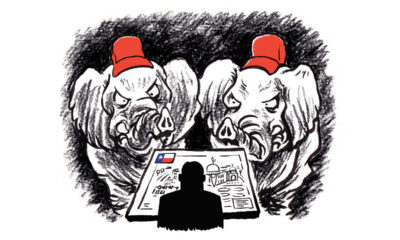Blueflames | Getty Images
The rate of inflation has come down from pandemic era highs.
Yet many Americans still say they are living paycheck to paycheck, according to new research from Bank of America. That may apply whether household income is less than $50,000 or more than $150,000.
How tight household budgets are is a matter of perception.
More from Personal Finance:
How to leverage higher income limits for the 0% capital gains bracket
Parents can save more for college, thanks to key change to 529 plans
Do I have enough money to retire? 3 questions to tell if you’re ready
When Bank of America asked consumers whether they agree with the statement, “I am living paycheck to paycheck,” almost half of respondents said yes, according to the firm’s third-quarter research.
Yet a new analysis of internal firm data found 26% of households are living paycheck to paycheck, based on how close their spending on necessities is to their total household income. Necessity spending includes gas, food and utilities, internet service, public transportation and health care.
The bank sampled an unspecified number of households that have a banking relationship with Bank of America.
Necessities are ‘swallowing up’ income
The share of households living paycheck to paycheck has grown since 2019, according to the firm. Around 35% of households earning less than $50,000 per year are living paycheck to paycheck, up from 32% in 2019.
Higher-income households also report struggling, with around 20% of households with more than $150,000 living paycheck to paycheck, the research found.
Prolonged negative feelings about the economy — a so-called vibecession — have emerged even as the U.S. economy has avoided a downturn. Inflation is a top issue with voters as the November election approaches, according to an October CNBC All-America Economic Survey.
“It’s not surprising that everyday necessity spending is swallowing up almost some people’s entire income,” said David Tinsley, senior economist at Bank of America Institute.
While higher wage growth has helped offset higher prices for everyday essential items, not everyone has benefited from that.
“For some people in the population, the wage growth they’ve seen just isn’t enough to counter the inflation they’ve seen on their basket of essentials,” Tinsley said.
Average hourly earnings were up 4% from one year ago and increased 0.4% for the month as of September, the Labor Department reported earlier this month. Both numbers were higher than estimated. Wages increased 4.6% from a year ago, a new ADP report shows.
American Dream requires ‘significantly larger income’
Jamie Grill | Getty Images
Other factors have also made it more difficult for individuals and families to make ends meet.
Higher interest rates have prompted people to pay more for financing on everything from credit cards to car purchases to home improvements, said Peter Traphagen, managing director at Traphagen CPAs & Wealth Advisors in Oradell, New Jersey. The firm ranked No. 9 on the 2024 CNBC Financial Advisor 100 list.
People who rent are among those feeling the biggest impact of inflation, Traphagen said.
“Those of us who weren’t asset holders really felt the squeeze on the paycheck, because you didn’t get the asset appreciation and you got cost of living increase,” Traphagen said.
The pressures have made it more difficult to maintain a middle-class household, said Nick Roth, a financial planner at Foster & Motley in Cincinnati. The firm ranked No. 34 on the 2024 CNBC FA 100 list.
“The American Dream of sending your kids to a good school and taking care of your family and living even in a modest home requires a potentially significantly larger income than it did even 10, 20 years ago,” Roth said.
Certain money moves can help provide flexibility
To get more wiggle room in household budgets, experts say certain moves can help.
Paying off debt balances will not only help free up incoming cash for other uses, but also reduce the total amount paid.
“While it may not feel like a savings item, you are improving your net worth by paying off debt,” Roth said.
By setting up even small amounts of savings to be automatically transferred from paychecks, individuals and families can start to build a cash cushion in case unexpected emergencies come up.
Ultimately, Roth said he encourages clients to ramp up their savings to a point where those automatic deductions make them feel as though they are living paycheck to paycheck.
That way, after savings has been taken out, investors can feel confident to spend whatever is left over in their accounts, he said.
Meanwhile, individuals and families should still prioritize long-term goals, like retirement investing, where they can.
For post-tax Roth savers, it may help free up more cash now by switching to pre-tax contributions that are tax deductible, Traphagen said.


 Blog Post1 week ago
Blog Post1 week ago
 Economics1 week ago
Economics1 week ago
 Finance1 week ago
Finance1 week ago
 Economics1 week ago
Economics1 week ago
 Personal Finance1 week ago
Personal Finance1 week ago
 Economics1 week ago
Economics1 week ago
 Accounting1 week ago
Accounting1 week ago
 Accounting1 week ago
Accounting1 week ago











